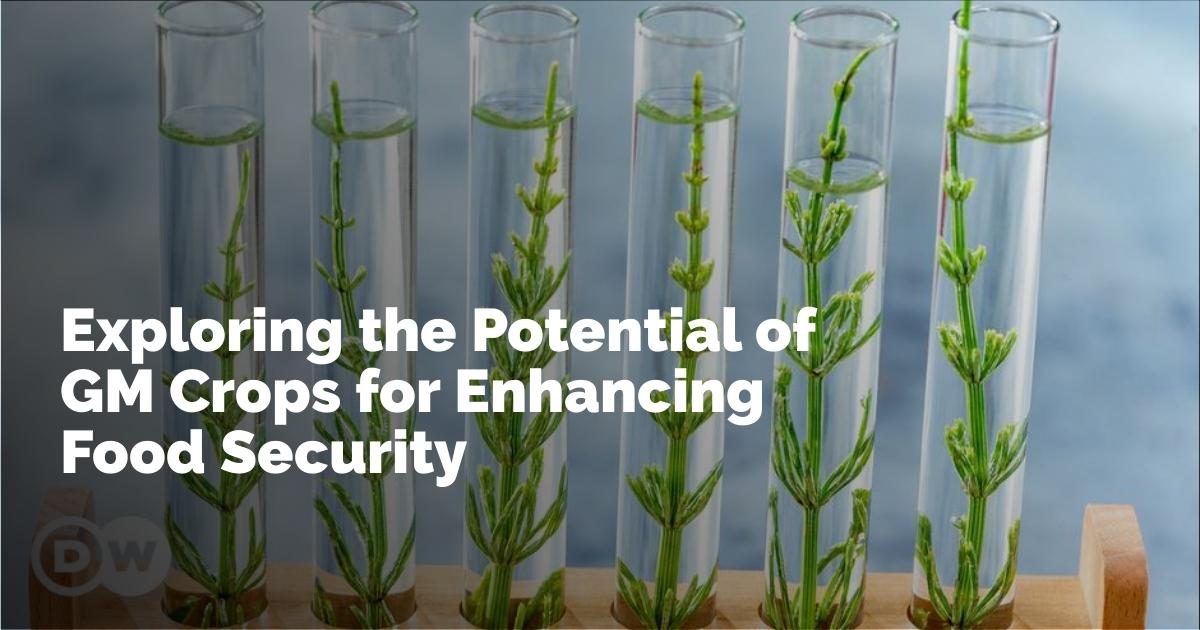Can Genetically Modified Crops Ensure Food Security?
The world is in the throes of a second "gene revolution," a significant development poised as a potential solution to sustain a burgeoning global population amidst rapidly changing climates. As extreme weather increasingly jeopardizes traditional farming, the promise of genetically modified (GM) crops is being revisited with renewed vigor.
A Historical Perspective on GM Crops
For thousands of years, farmers have experimented with cross-breeding various plants to create hybrids that are more resilient and yield better harvests. However, the modern era of genetic modification began in the 1970s when scientists discovered the potential to engineer DNA to create transgenic crops. By the 1990s, these crops began appearing in markets, though not without controversy, as they were popularly referred to as "Frankenstein foods," largely due to public fear of potential health hazards.
Despite longstanding studies affirming their safety, genetically modified organisms (GMOs) faced resistance rooted in skepticism about their impact on health. Nevertheless, we are now entering the 2020s, where advanced genomic editing techniques have refined the approach—allowing for DNA alterations without introducing genes from different organisms. This progress underscores the potential of biotechnology in securing food production for an anticipated global population approaching ten billion by 2050.
The Role of Biotechnology in Modern Agriculture
Proponents of GM technology, such as the World Economic Forum (WEF), emphasize the development and potential benefits of genetically engineered strains of staples like rice, maize, wheat, potatoes, and cassava. These advancements promise resilience against extreme weather and novel climate-induced diseases. Furthermore, the latest biotechnological innovations aim to enhance the capacity of plants and soil to absorb and store carbon from the atmosphere, thus contributing to climate change mitigation.
One noteworthy initiative is a US-based research project focused on optimizing photosynthesis. By improving how staple crops like maize and rice convert sunlight and carbon dioxide into energy, the project aims to boost yields while simultaneously reducing atmospheric carbon. Backed by significant funding, including approximately $115 million from the Bill & Melinda Gates Foundation, such projects promise a new era akin to the Green Revolution, empowering farmers to surpass historical production levels.
Critiques of the GM Approach
Despite the potential benefits posited by its proponents, GM technology is not without its critics. Some scientists and environmentalists contend that GM crops could exacerbate rather than alleviate climate change-related challenges such as droughts and floods. Anneleen Kenis, an expert in political ecology, suggests that these crops perpetuate an "agro-industrial system" heavily implicated in the climate crisis.
Current agricultural practices contribute to about a third of global greenhouse gas emissions, with GM seeds accounting for a substantial portion of U.S. crop production. Critics highlight the dependency on large-scale monocultures that require intensive inputs of artificial fertilizers, pesticides, and irrigation, which is neither energy-efficient nor sustainable. They argue this system benefits "agro-industrial giants" that dominate the global seed and pesticide markets, failing to address food insecurity across the world.
Policy and Resistance to GM Crops
In some regions, resistance to GM technology has catalyzed legal interventions. In the Philippines, a moratorium on GM golden rice and eggplant reflects public skepticism varied by health and ecological concerns. While golden rice—engineered to contain vitamin A—was developed to address nutritional deficiencies, legal proceedings underscore the contested nature of its safety and effectiveness.
On the other side of the debate, proponents argue that the ban hinders access to essential nutrients for populations facing deficiencies, exemplifying the tension between biotechnology's potential benefits and the advocacy for ecological and crop diversity.
The Push for a GM Gene Revolution
Advocates of a GM-led agricultural future argue that bioengineered solutions are critical, particularly in areas plagued by extreme environmental challenges. Drought-tolerant transgenic crops, like maize enhanced by adding genes from the dry-resistant "resurrection plant" xerophyta viscosa, demonstrate potential impacts. Jennifer Thomson, a leading figure in this field, cites the successful increase in crop yields through bioengineering as a boon to farmers in arid regions.
Projects focusing on staples like cowpea, critical to diets across Africa, illustrate the potential of bioengineered pest resistance. Without such innovations, crop losses due to pests could devastate local food supplies, underscoring the importance of genetically modified pesticide-resistant crops for sustaining food security.
The Continued Debate Over GM Crops
Despite ongoing advancements, GM technology is still viewed with caution by large segments of the global population. Greenpeace and other organizations that advocate for ecological, non-GM farming approaches argue that the predominance of agri-biotech companies in research often overshadows alternative methods that could contribute to a sustainable food future.
Concerns remain regarding the risk assessments of GM crops, including potential health risks from the toxins used to protect plants from pests. While some regions have adopted GM crops without observable health concerns, critics argue that the emphasis should be on creating biodiverse, sustainable agricultural systems that address food security without the risks posed by monocultures and high carbon footprints.
The conversation around genetically modified crops and their role in ensuring food security remains complex and highly debated. As the world faces unprecedented challenges related to climate change and population growth, the balance between technological advancement and ecological conservation will be critical in shaping the future of global agriculture.
출처 : Original Source

